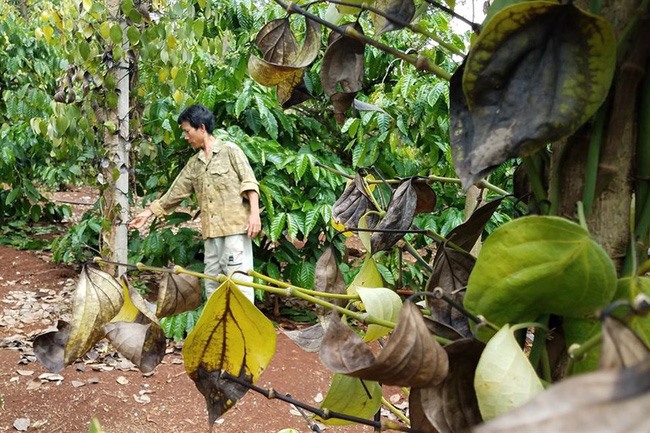 Society
Society

A backlog of violations needs to be dealt with firmly, interest groups disbanded and strict, heavy punishments handed out to deal with the production of fake fertilisers in the country, officials said at an online meeting on Friday.
 |
| A backlog of violations needs to be dealt with firmly, interest groups disbanded and strict, heavy punishments handed out to deal with the production of fake fertilisers in the country, officials said at an online meeting on Friday.— Photo cafef.vn |
HÀ NỘI — A backlog of violations needs to be dealt with firmly, interest groups disbanded and strict, heavy punishments handed out to deal with the production of fake fertilisers in the country, officials said at an online meeting on Friday.
These imperatives were stressed at the meeting held on the Government portal to improve management of the fertiliser industry in Việt Nam.
Those who produce fake fertiliser should be fined heavily, seven times the current fines, and their business licenses revoked for two years, said Hoàng Trung, director of the Plant Protection Department under the Ministry of Agriculture and Rural Development.
After 2 years, if the violators continue to ignore or disobey regulations, their business licences should be cancelled and their factories shut down, he said.
The new level of fines is included in a draft decree of imposing administrative fine on fertiliser management by the ministry.
At present, under Decree 163/2013/NĐ-CP issued in 2013, an enterprise would be fined VNĐ90-100 million (US$3,960-4,400) for making substandard fertilizer. However, these fines have proved sufficient to deter violators.
According to the Việt Nam Fertiliser Association, the number of fake fertiliser producers is on the rise. More than 4,000 violations were recorded in 2015, and this increased by more than a thousand in 2016.
Nguyễn Hạc Thúy, president of the association, said authorities should deal firmly with the backlog of violations.
“If we do that, it will help deter other violators in the future,” he said.
Thúy cited the example of Thuận Phong Company in the southern Đồng Nai Province. The company was discovered producing fake fertiliser in April 2015. However, the case was still being processed, he said.
He questioned whether the two-year standstill had happened because of interest groups coming to play.
Useful decree
Trung said at the meeting that a new Decree (108/2017/NĐ-CP) on fertiliser management issued by the Government to replace its 2013 predecessor has been assessed to be comprehensive.
It contains regulations on recognising, testing, producing, trading, exporting, importing, quality management, labeling, advertising, and using fertilisers in Việt Nam, he said.
The Decree is expected to be a useful tool for authorities to deal effectively with the fake fertiliser problem, he added.
The decree’s most-notable improvement is that it clearly identifies the agricultural ministry as the sole responsible agency for fertiliser management, instead of two ministries, agriculture and industry and trade, as earlier.
To implement the decree, the agricultural ministry plans to inspect 41 fertiliser-testing centres across the country towards improving their capability. Earlier, 11 testing centres were found violating regulations in issuing quality certificates for substandard fertilisers to many producers in May 2016. However, no one had been held responsible so far, he noted.
“Decree 108 is very useful but not a “magic weapon” to fix the situation immediately,” Thúy said, adding that it requires serious implementation by authorised agencies as also greater awareness among fertiliser makers.
The agriculture ministry estimates that about 33 million tonnes of fertiliser are produced each year in Việt Nam, three times the actual demand, which it calculates at about 10-11 million tonnes.
The redundancy is also a serious problem facing the industry, the ministry said.
It is estimated that faked fertilisers cause losses of $2 billion each year. The loss is calculated based what people pay for quality fertiliser, but receive fake ones instead. — VNS




